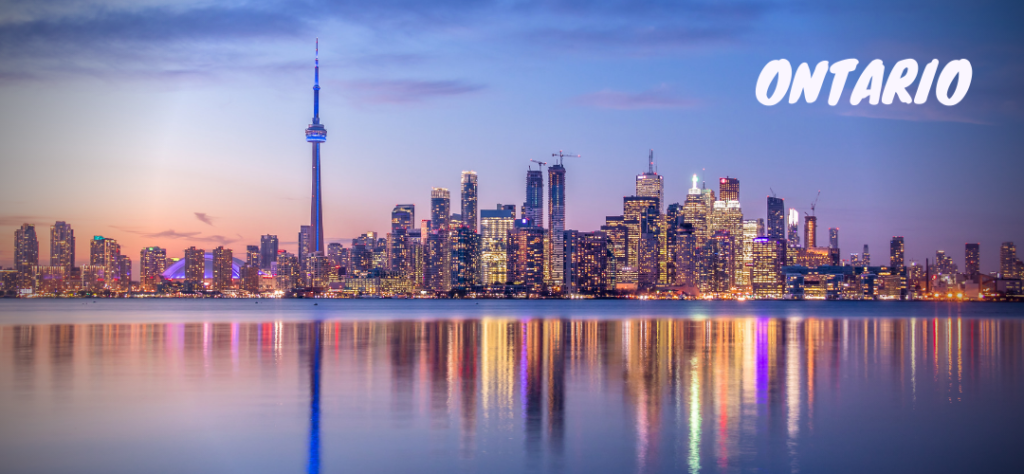
Ontario is located in the central region of Canada. It’s surrounded by Quebec to the east, the Hudson Bay to the north, Manitoba to the west, and the Great Lakes to the south.
 Interesting facts about Ontario
Interesting facts about Ontario
· As of March 2019, the population of Ontario was estimated to be about 13.5 million people. It is the most populated province in Canada.
· There are over 250,000 lakes in Ontario, which comprises one-fifth of the world’s fresh water supply.
· Ontario has the only truly authentic castle in North America, Casa Loma, located in Toronto.
· Ontario has an area of 1,076,395 square kilometers, the 4th largest province in Canada.
· Ontario has the longest freshwater beach in the world (Wasaga Beach).
· Ontario has the most populous city of Canada, Toronto (approximately 2.75 million people).
· The majority of the people living in Ontario live in the cities near the shores of the Great Lakes.
· About 66% of Ontario’s land is considered forested land.
· There are more than 3,600 species of plants, 154 species of fish, 50 species of amphibians and reptiles, 483 species of birds, and more than 81 species of mammals in the province.
 Main Cities of Ontario
Main Cities of Ontario
Toronto
With 2,731,571 residents as of 2016, Toronto is the provincial capital of Ontario and its most populous city. It is considered the center of economic and trading development of the region. In 2016, the city was named the most multicultural city of the world by BBC Radio, with over 51% of the population being born outside of Canada, comprising over 230 different nationalities. An interesting fact about Toronto: While English is the most commonly spoken language in Toronto (about 53.8% of the people speaks English), almost 42.3% of the rest of the people speak another language. This diversity is living proof of the role that Canada plays as an immigration destination. Toronto is the home of many financial institutions, multinational corporations, media and news networks, as well as centers for the arts and culture. It serves as an international hub for business. Yearly, the Toronto International Film Festival is held, attracting thousands of global visitors.
Ottawa
Ottawa is the capital of Canada. In 2019, the city surpassed the one million inhabitants. Ottawa limits with the Quebec border. English and French are the most common languages spoken in Ottawa. The city is a mix of historic heritage, culture and famous landmarks, such as the Rideau Canal. The majority of the jobs in Ottawa are provided by the federal government. Other industry segments contributing to the capital’s economy are the biotech, technology, telecommunications, and security and defense sectors.The city has been described as a place with all the advantages of an urban center with the charm of a small town. There are outdoor activities for the adventurous, cultural and artistic events for the lovers of arts, festivals and events, sports activities, gastronomic experiences for the sophisticated and entertainment and nightlife for everyone.
 Education in Ontario
Education in Ontario
Like other Canadian regions, education in Ontario is publicly funded and divided in three stages: early education, elementary and secondary school, which provides equal opportunities to all the students that enroll. To be admitted into college or a university, you will need a high school diploma. Ontario has 20 public universities, 24 colleges and more than four hundred private career colleges. Each college has different requirements for admissions. If you require financial aid, there are loans, grants and scholarships programs you can apply.